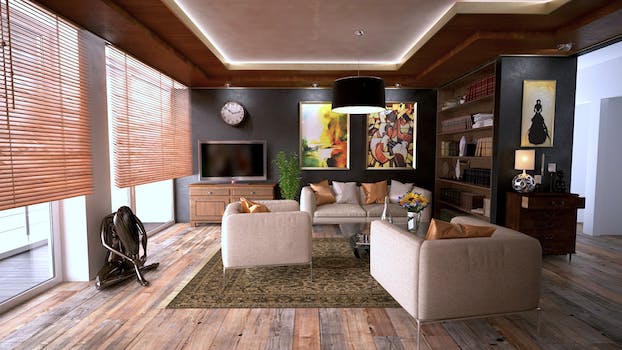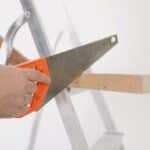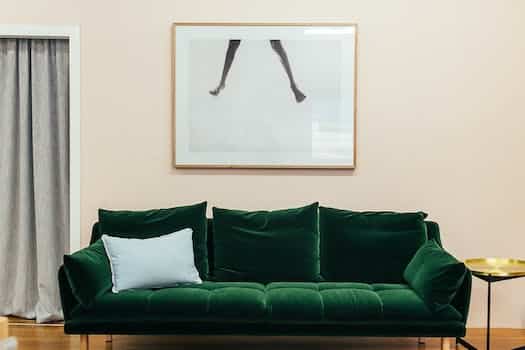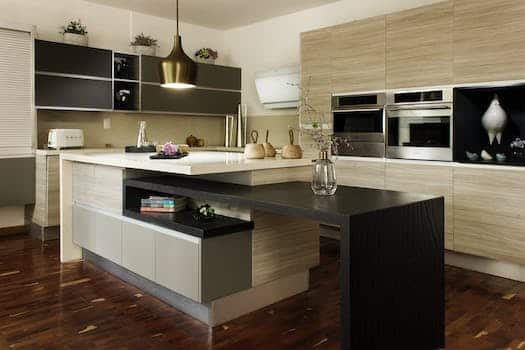When it comes to managing personal finances, it’s essential to explore various ways to maximize deductions and minimize tax liabilities. One common question that homeowners often ponder is whether home furnishings can be considered tax deductible. In this article, we will delve into the intricacies of this matter, examining the eligibility criteria, potential deductions, and the importance of proper documentation. By understanding the rules and regulations surrounding home furnishings as tax deductions, you can make informed decisions to optimize your tax benefits and potentially save money in the process.
- 1. Introduction
- 1.1. Understanding tax deductions
- 1.2. What are home furnishings?
- 1.3. Importance of knowing if home furnishings are tax deductible
- 2. Eligibility for Home Furnishings Tax Deductions
- 2.1. Qualifying as a homeowner
- 2.2. Primary residence vs. secondary residence
- 2.3. Requirements for tax deductions on home furnishings
- 2.4. Limits on the amount deductible
- 2.5. Keeping proper documentation
- 3. Types of Home Furnishings That May Be Tax Deductible
1. Introduction
When it comes to managing our finances, finding ways to save money is always a top priority. One area that many people wonder about is whether home furnishings are tax deductible. The answer to this question depends on various factors and specific circumstances, which we will explore in this article. Understanding the tax rules surrounding home furnishings can help you make informed decisions and potentially maximize your tax benefits. So, let’s delve into the fascinating world of tax deductions for home furnishings!
1.1. Understanding tax deductions
When it comes to tax deductions, many individuals wonder whether their home furnishings can be considered eligible expenses. Understanding the rules and regulations surrounding this topic is crucial for homeowners looking to maximize their deductions and potentially reduce their taxable income.
In general, home furnishings such as furniture, appliances, and other decorative items cannot be directly claimed as tax deductions. The Internal Revenue Service (IRS) considers these items as personal expenses that are not deductible. However, there are certain situations where homeowners may be able to indirectly claim tax deductions related to their home furnishings.
One such situation is if the home furnishings are used for business purposes. If a portion of your home is exclusively used as a home office or for conducting business activities, you may be able to deduct a percentage of the cost of your home furnishings as part of your home office expenses. It is important to keep detailed records and have a clear understanding of the IRS guidelines for claiming home office deductions.
Another scenario where home furnishings may be considered for tax deductions is if they are included as part of a home improvement project. Certain home improvements, such as installing energy-efficient windows or upgrading to a more energy-efficient heating and cooling system, may qualify for tax credits or deductions. In such cases, the cost of the home furnishings directly related to the improvement project may be eligible for deductions.
It is important to consult with a tax professional or refer to the IRS guidelines to determine the specific rules and requirements for claiming tax deductions related to home furnishings. Keeping accurate records and receipts of your home furnishings purchases and any associated expenses is essential for supporting your claims.
In conclusion, while home furnishings are generally not directly eligible for tax deductions, there are circumstances where they may indirectly qualify. Understanding the rules and regulations surrounding tax deductions for home furnishings is crucial for homeowners looking to make the most of their deductions and potentially reduce their taxable income.
1.2. What are home furnishings?
Home furnishings refer to the various items and accessories that are used to decorate and furnish a home. These include furniture, such as sofas, chairs, tables, and cabinets, as well as decorative items like rugs, curtains, lamps, and artwork. Home furnishings play a crucial role in transforming a house into a comfortable and aesthetically pleasing living space. They not only serve functional purposes but also add personality and style to a home. In this article, we will explore whether home furnishings can be considered as tax-deductible expenses.
1.3. Importance of knowing if home furnishings are tax deductible
When it comes to tax deductions, homeowners often wonder if they can claim their home furnishings as deductible expenses. Understanding the tax rules regarding home furnishings is crucial for homeowners to maximize their deductions and potentially save money. This article will explore the importance of knowing whether home furnishings are tax deductible and provide valuable insights for homeowners seeking to optimize their tax benefits.
2. Eligibility for Home Furnishings Tax Deductions
To determine the eligibility for home furnishings tax deductions, several factors need to be considered. Firstly, it is important to understand that not all home furnishings are tax deductible. The Internal Revenue Service (IRS) has specific rules and regulations regarding which expenses can be claimed as deductions.
One of the main criteria for eligibility is that the home furnishings must be used for business purposes. This means that if you are purchasing furniture or decor items solely for personal use, they would not qualify for tax deductions. However, if you are using a specific area of your home as a dedicated office space for your business, the furnishings in that area may be eligible for deductions.
Additionally, the home furnishings must be considered ordinary and necessary for your business. This means that they should be items that are commonly used and essential for the functioning of your business. Examples of eligible furnishings may include desks, chairs, filing cabinets, bookshelves, and other similar items.
It is also important to keep in mind that the IRS has specific rules regarding the depreciation of home furnishings. Generally, the cost of the furnishings cannot be fully deducted in the year of purchase, but instead, they are depreciated over a certain period of time based on their useful life.
To claim home furnishings as tax deductions, you will need to keep detailed records and receipts of your purchases. It is recommended to consult with a tax professional or review the IRS guidelines to ensure compliance with all necessary requirements. Overall, while home furnishings can potentially be tax deductible, it is crucial to understand and adhere to the specific rules and regulations set forth by the IRS.
2.1. Qualifying as a homeowner
To determine if you are eligible for home furnishings tax deductions, there are certain qualifications you must meet. These qualifications are essential in order to claim any tax benefits related to your home furnishings. Here are some key factors to consider:
1. Primary Residence: The home for which you are claiming deductions must be your primary residence. It is important to note that second homes or vacation properties do not qualify for these tax benefits.
2. Itemized Deductions: In order to claim deductions for home furnishings, you must choose to itemize your deductions rather than taking the standard deduction. Itemizing allows you to list and provide evidence of all eligible expenses, including those related to home furnishings.
3. Qualified Expenses: To be eligible for tax deductions, the home furnishings expenses must be considered qualified expenses. This includes furniture, appliances, carpets, curtains, and other items that are considered essential for the functioning and comfort of your home.
4. Capital Improvements: It is important to differentiate between regular home furnishings purchases and capital improvements. While regular purchases may not be tax deductible, capital improvements that enhance the value of your home, such as installing energy-efficient windows or upgrading your heating system, may be eligible for deductions.
5. Documentation: To claim tax deductions for home furnishings, you must maintain proper documentation and receipts. It is crucial to keep records of all expenses related to your home furnishings, including purchase receipts, invoices, and any other relevant documents.
Before claiming any deductions, it is recommended to consult with a qualified tax professional or refer to the latest IRS guidelines to ensure you meet all the necessary eligibility criteria.
2.2. Primary residence vs. secondary residence
When it comes to tax deductions for home furnishings, understanding the difference between a primary residence and a secondary residence is crucial. The eligibility for these deductions may vary depending on the type of property you own.
A primary residence refers to the home where you primarily reside and spend the majority of your time. It is the place where you live on a permanent or regular basis. On the other hand, a secondary residence, also known as a vacation home or a second home, is a property that you own but do not use as your main dwelling.
When it comes to tax deductions, the Internal Revenue Service (IRS) allows homeowners to deduct certain expenses related to their primary residence. These deductions can include mortgage interest, property taxes, and certain home improvements that meet specific criteria. However, it is important to note that not all home furnishings are tax-deductible.
The eligibility for tax deductions on home furnishings depends on the purpose of the furnishing and the type of property. Generally, home furnishings that are considered a necessary part of the property, such as built-in appliances or permanent fixtures, may be eligible for tax deductions.
For a primary residence, eligible home furnishings may include items that are directly related to the maintenance or improvement of the property. This can include things like heating and cooling systems, plumbing fixtures, or energy-efficient upgrades. It is important to keep receipts and documentation to support these deductions.
On the other hand, for a secondary residence, the eligibility for tax deductions on home furnishings may be more limited. In most cases, home furnishings in a secondary residence are not considered essential for the property’s functionality. Therefore, the IRS may not allow deductions for these items.
In conclusion, the eligibility for tax deductions on home furnishings depends on whether the property is a primary residence or a secondary residence. While certain home furnishings may be eligible for deductions in a primary residence, the same may not apply to a secondary residence. It is always recommended to consult with a tax professional or refer to the IRS guidelines for specific information regarding tax deductions on home furnishings.
2.3. Requirements for tax deductions on home furnishings
To be eligible for tax deductions on home furnishings, there are certain requirements that need to be met. Firstly, the home furnishings must be used for business purposes. This means that if you use a portion of your home as a dedicated workspace for your business or self-employment, you may qualify for tax deductions on the furniture and equipment used in that area.
Additionally, the home furnishings must be considered necessary and ordinary for your particular business. This means that the items you are claiming as deductions should be commonly used in your industry and essential for the operation of your business.
It is important to note that personal or residential use of the home furnishings will disqualify them from being tax deductible. The Internal Revenue Service (IRS) strictly distinguishes between personal and business use, so you must ensure that the furnishings are used solely for business purposes.
Lastly, the expenses for the home furnishings must be reasonable and directly related to your business. This means that extravagant or excessive purchases may not be eligible for tax deductions. It is crucial to keep detailed records and receipts to support your claims and demonstrate the validity of your expenses.
Overall, meeting these requirements is essential to be eligible for tax deductions on home furnishings. It is recommended to consult with a tax professional or accountant to ensure compliance with all tax regulations and maximize your deductions.
2.4. Limits on the amount deductible
Limits on the amount deductible:
When it comes to home furnishings tax deductions, there are certain limits on the amount that can be deducted. The Internal Revenue Service (IRS) has set these limits to ensure that only certain expenses are eligible for deduction. It’s important to be aware of these limits to accurately claim deductions and avoid any potential issues with the IRS.
Eligibility for Home Furnishings Tax Deductions:
To be eligible for home furnishings tax deductions, there are a few requirements that must be met. First, the home must be considered your primary residence. Second, the furnishings must be used solely for the purpose of furnishing the home, such as furniture, appliances, and decorative items. Additionally, the expenses must be directly related to the furnishing of the home and not for any other purposes.
It’s important to keep detailed records of your home furnishing expenses, including receipts and invoices, to substantiate your deductions. If audited by the IRS, you will need to provide documentation to support your claimed deductions. It’s also recommended to consult with a tax professional or accountant to ensure you are following all the necessary guidelines and accurately claiming any eligible deductions for home furnishings.
2.5. Keeping proper documentation
Keeping proper documentation is essential when it comes to claiming tax deductions for home furnishings. To determine the eligibility for these deductions, the Internal Revenue Service (IRS) requires individuals to maintain accurate records and provide evidence of their expenses.
When purchasing home furnishings that may be eligible for tax deductions, it is crucial to keep all receipts, invoices, and other relevant documentation. This documentation should clearly state the date of purchase, the item or items purchased, their cost, and the name of the seller.
Additionally, it is advisable to keep a record of any warranties, guarantees, or service contracts associated with the home furnishings. These documents can serve as proof of the item’s value and condition.
Furthermore, if any improvements or modifications are made to the home furnishings, such as renovations or repairs, it is important to maintain records of these expenses as well. This information may be required to determine the depreciated value of the furnishings.
By keeping proper documentation, individuals can ensure that they meet the eligibility criteria for home furnishings tax deductions. It not only helps in accurately reporting these expenses but also provides protection in case of an IRS audit. Therefore, organizing and preserving all relevant paperwork is crucial for claiming tax deductions on home furnishings.
3. Types of Home Furnishings That May Be Tax Deductible
When it comes to tax deductions, many homeowners wonder if their home furnishings can be included. While most home furnishings are not tax deductible, there are a few exceptions to keep in mind.
1. Home Office Furniture: If you have a designated home office space that is used exclusively for business purposes, you may be able to deduct the cost of the furniture. This includes items such as desks, chairs, and filing cabinets.
2. Energy-Efficient Furnishings: Some energy-efficient home furnishings may qualify for tax credits. This includes items like energy-efficient windows, doors, and insulation. Be sure to check the specific criteria set by the government to determine if your purchases qualify.
3. Medical Necessity Furnishings: In certain cases, home furnishings that are deemed medically necessary may be tax deductible. For example, if you require a special bed or chair for medical reasons, the cost of these items may be eligible for deductions.
It’s important to note that these deductions may vary depending on your country’s tax laws and regulations. Always consult with a tax professional or refer to the official guidelines to ensure you’re eligible for any tax deductions related to home furnishings.
3.1. Furniture and appliances
When it comes to tax deductions, most people think of expenses related to business or medical expenses. However, it’s important to note that certain types of home furnishings may also be eligible for tax deductions. This can be particularly beneficial for individuals who use a portion of their home for business purposes or have a home office.
One category of home furnishings that may be tax deductible is furniture. If you use a specific piece of furniture exclusively for your business or work-related activities, you may be able to deduct the cost of that furniture as a business expense. This can include items such as desks, chairs, filing cabinets, and bookshelves.
Appliances can also fall under the category of tax-deductible home furnishings. For example, if you purchase a refrigerator or stove for your home office or rental property, you may be able to deduct a portion of the cost. However, it’s important to note that the appliance must be used solely for business purposes to qualify for the deduction.
It’s worth mentioning that in order to claim these deductions, you will typically need to meet certain criteria set by the tax authorities. This may include keeping detailed records of the expenses, proving that the furnishings are used exclusively for business purposes, and calculating the percentage of business use.
Before claiming any tax deductions related to home furnishings, it’s advisable to consult with a tax professional or accountant who can provide guidance specific to your situation. They can help ensure that you meet all the necessary requirements and maximize your potential deductions.
In conclusion, while not all home furnishings are tax deductible, certain types of furniture and appliances used for business purposes may qualify for deductions. It’s important to keep accurate records and consult with a tax professional to determine your eligibility and maximize your deductions.
3.2. Home office equipment
When it comes to setting up a home office, there are several types of home furnishings that may be tax deductible. These deductions can help reduce your overall tax liability and save you money. Here are some common types of home office equipment that may qualify for tax deductions:
1. Office Furniture: Desks, chairs, filing cabinets, and other furniture specifically used for your home office may be eligible for tax deductions. Make sure to keep receipts and documentation to support your claim.
2. Computers and Peripherals: If you use a computer, laptop, printer, scanner, or other related peripherals for your home office work, you may be able to deduct the cost of these items. Keep track of the purchase price, as well as any maintenance or repair expenses.
3. Internet and Phone Expenses: If you rely on the internet and phone services for your home office, a portion of these expenses may be tax deductible. Be sure to calculate the percentage of time and space your home office occupies in your overall residence.
4. Office Supplies: Pens, paper, ink cartridges, and other office supplies that are necessary for your home office work may be eligible for tax deductions. Keep a record of your purchases and remember to exclude any personal use items.
It’s important to note that in order to claim these deductions, your home office must be used exclusively and regularly for business purposes. Additionally, it’s recommended to consult with a tax professional or refer to the IRS guidelines to ensure compliance and maximize your tax savings.
3.3. Energy-efficient upgrades
When it comes to saving money on taxes, homeowners often look for opportunities to deduct expenses related to their homes. While most home furnishings are not tax deductible, there are certain types of energy-efficient upgrades that may qualify for tax deductions. These upgrades not only help to reduce energy consumption but also contribute to a more sustainable and eco-friendly living environment.
One of the types of home furnishings that may be tax deductible is energy-efficient windows. By replacing old, drafty windows with energy-efficient ones, homeowners can potentially qualify for a tax deduction. These windows are designed to minimize heat transfer, keeping the interior of the home comfortable throughout the year while reducing the reliance on heating and cooling systems.
Another category of tax-deductible home furnishings includes energy-efficient appliances. Upgrading to energy-efficient refrigerators, dishwashers, washing machines, and other household appliances can not only save homeowners money on their energy bills but also provide them with potential tax benefits. These appliances are designed to consume less energy while maintaining optimal performance, making them an attractive option for those looking to reduce their carbon footprint.
Furthermore, installing energy-efficient lighting fixtures can also be eligible for tax deductions. Switching to LED or CFL bulbs and installing energy-saving light fixtures not only helps to lower electricity bills but also reduces the overall energy consumption of a home. These upgrades are considered environmentally friendly and can potentially qualify for tax deductions.
It is important to note that tax deductions for energy-efficient upgrades may vary depending on the country or region. Homeowners should consult with a tax professional or refer to the local tax guidelines to determine the eligibility and specific requirements for claiming tax deductions on home furnishings. By making energy-efficient upgrades, homeowners can not only enjoy the benefits of a more sustainable and energy-saving home but also potentially reduce their tax liabilities.
3.4. Security and safety installations
When it comes to ensuring the security and safety of your home, installing the right systems and equipment is crucial. There are various types of security and safety installations that can provide peace of mind and may even qualify for tax deductions. These installations not only protect your home from potential threats but also enhance its overall value.
One common security installation is a home security system. This includes a combination of alarm systems, surveillance cameras, motion sensors, and door/window sensors. A properly installed security system can deter burglars and alert homeowners or authorities in case of a break-in. Depending on the jurisdiction, the costs associated with purchasing and installing a home security system may be eligible for tax deductions.
Another important safety installation is a fire alarm system. This includes smoke detectors, fire extinguishers, and sprinkler systems. These installations are designed to detect and respond to fires, minimizing the potential damage to your home and ensuring the safety of its occupants. In some cases, the expenses related to installing fire alarm systems may be tax deductible.
Additionally, certain home furnishings can also contribute to the security and safety of your property. For example, installing sturdy and reliable doors and windows can provide an added layer of protection against break-ins. Similarly, investing in high-quality locks and deadbolts can significantly enhance the security of your home. While not all home furnishings may be tax deductible, it is worth exploring whether certain security-focused installations and upgrades might qualify for deductions.
It is important to note that tax laws and regulations differ depending on your location, so consulting with a tax professional or researching the specific guidelines in your area is recommended. By investing in security and safety installations for your home, you not only protect your property and loved ones but also potentially benefit from tax deductions.
3.5. Accessibility modifications
When it comes to tax deductions, homeowners may be surprised to learn that certain types of home furnishings can be eligible for tax deductions. These deductions are subject to specific criteria and requirements set by the Internal Revenue Service (IRS). It is important to understand that not all home furnishings are tax deductible, but there are some modifications and situations where deductions may apply.
One type of home furnishing that may be tax deductible is adaptive equipment for accessibility modifications. These modifications are made to accommodate individuals with disabilities or mobility issues. Examples of adaptive equipment include wheelchair ramps, stairlifts, grab bars, and bathroom modifications such as roll-in showers or lowered countertops.
To qualify for tax deductions, the accessibility modifications must meet certain requirements. The modifications should be necessary for the individual’s medical condition, prescribed by a licensed healthcare professional, and primarily used for medical purposes. Additionally, the cost of the modifications should exceed a certain threshold or percentage of the individual’s adjusted gross income (AGI).
It is crucial to keep detailed records, including receipts and documentation, to support the eligibility of these deductions. This will help in case of an audit or verification by the IRS. It is advisable to consult a tax professional or accountant to ensure compliance with tax laws and regulations.
While not all home furnishings are tax deductible, accessibility modifications for individuals with disabilities can provide potential tax benefits. It is essential to understand the specific criteria and requirements set by the IRS to determine if these deductions apply to your situation.
Conclusion
In conclusion, home furnishings are generally not tax deductible. However, there are certain circumstances where they may be eligible for deductions. It is important to consult with a tax professional or refer to the IRS guidelines to determine if you qualify for any deductions related to home furnishings.






5 Comments
Rena Thurman
1 year agoThats awesome! Ive always wondered if I can claim tax deductions on my home furnishings. It would be a great way to save some money. I cant wait to discover more about qualifying expenses and how I can maximize my tax benefits. Thanks for sharing this valuable information!
Kimberly Gitlow
1 year agoThank you for sharing this informative post on tax deductions for home furnishings. I found it to be quite enlightening and helpful in understanding the potential tax benefits that can be maximized through qualifying expenses. It is always crucial to stay updated with such expert insights in order to make informed decisions while managing our finances. I appreciate the effort put into delivering this valuable information.
Willetta Henebry
1 year agoHey there! This post on tax deductions for home furnishings sounds interesting. Ive always wondered if I can claim any tax benefits for all the furniture Ive bought over the years. Looking forward to discovering more about qualifying expenses and how I can make the most out of it. Thanks for the helpful insights!
Carola Antin
1 year agoAccording to my research, claiming tax deductions on home furnishings can be a complex matter. It is essential to understand the criteria for qualifying expenses in order to maximize tax benefits effectively. Seeking expert insights on this matter would be highly advisable, as they can provide valuable guidance and ensure compliance with tax regulations.
Kakalina Aeneas
1 year agoI would like to know more about the tax deductions for home furnishings. It’s important for me to understand the qualifying expenses and how I can maximize my tax benefits. Can you provide expert insights on this matter? Thank you.